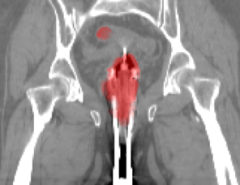Authors: Xuanzhong Chen, Xiaohao Mao, Qihan Guo, Lun Wang, Shuyang Zhang, Ting Chen
Published on: February 09, 2024
Impact Score: 8.3
Arxiv code: Arxiv:2402.06341
Summary
- What is new: Introduction of RareBench, a benchmark for evaluating Large Language Models (LLMs) on rare diseases, and the largest open-source dataset on rare disease patients.
- Why this is important: Low clinical diagnosis rates for rare diseases due to the scarcity of experienced physicians and the complexity of differential diagnosis.
- What the research proposes: A dynamic few-shot prompt methodology that uses a comprehensive rare disease knowledge graph to enhance the diagnostic capabilities of LLMs.
- Results: Experimental findings highlight the superior diagnostic performance of GPT-4 over specialist physicians in the context of rare diseases.
Technical Details
Technological frameworks used: Dynamic few-shot prompting
Models used: GPT-4
Data used: The largest open-source dataset on rare disease patients
Potential Impact
Healthcare providers, telemedicine platforms, diagnostic software companies
Want to implement this idea in a business?
We have generated a startup concept here: DiagnoRare.


Leave a Reply